This is the 11th post in a series of Nikon D850 tests. The series starts here.
Yesterday I showed how the Focus Shift Shooting feature on the D850 can allow you to get close to the best possible focus (to really nail it, the steps would have to be smaller than the smallest the D850 allows). Now that we know something close to the best possible results for our test lens, our test target, our lighting, and our target distance, we can compare those numbers to the autofocus tests that we did before.
You’ve seen five of these six curves before. They are the results of 32 exposures for each aperture using AF-S, single-servo mode, with a small central focus spot. Mean is average, and sigma is standard deviation. The MTF50 results are presented in cycles per picture height. What I’ve done is add the best results from the Focus Shift Shooting testing as the green line. The first thing that jumped out at me was the fact that the best autofocus results on average slightly exceeded the best Focus Shift ones. I believe that’s because the Focus Shift Shooting steps are so large that they missed the point of peak focus-driven sharpness. There’s only one data point, at f/2, where the differences look to be at all significant.
Looking at the green raw channel, which is the most important one, we see that the best focus point found by the Focus Shift Shooting feature is consistently worse that the best of the 32 AF images in the sample set. Indeed, except for f/1.4, the means of the AF test results is very close to the Focus Shift Shooting ones.
Looking at the red channel, it looks like the AF results are much worse. But that’s not actually the case. This lens has a lot of longitudinal chromatic aberration (LoCA), which means that the focus point that peaks the green channel is not the one that gives the best results for the red one. The Focus Shift line is the best red results, which an AF system that quite properly prioritizes green cannot achieve.
So now the mean results of the AF system look darned good. There is still a lot of variation in the data set, though.
Now let’s look at the CDAF charts:
The spread is quite low, and AF on average does as well as Focus Shift Shooting.
Same with the green channel.
With the red channel, AF doesn’t look so good, but I believe this is not because of any fault in the AF system, but because of the LoCA in the lens, as explained above.
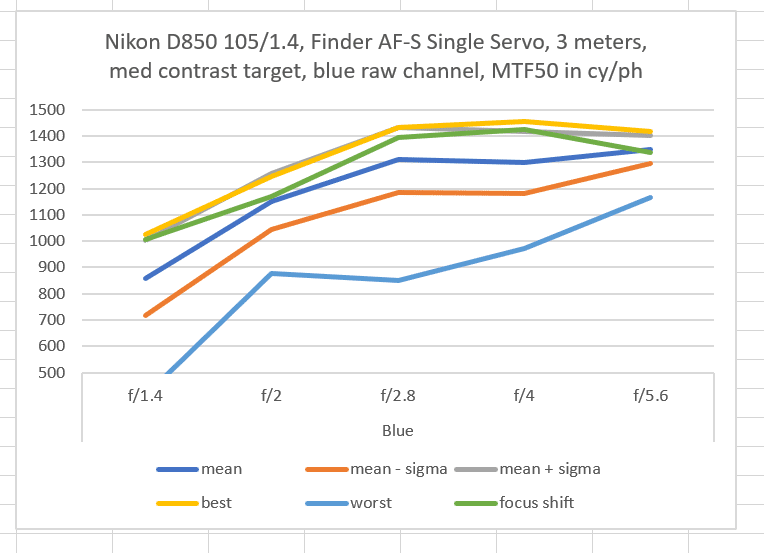
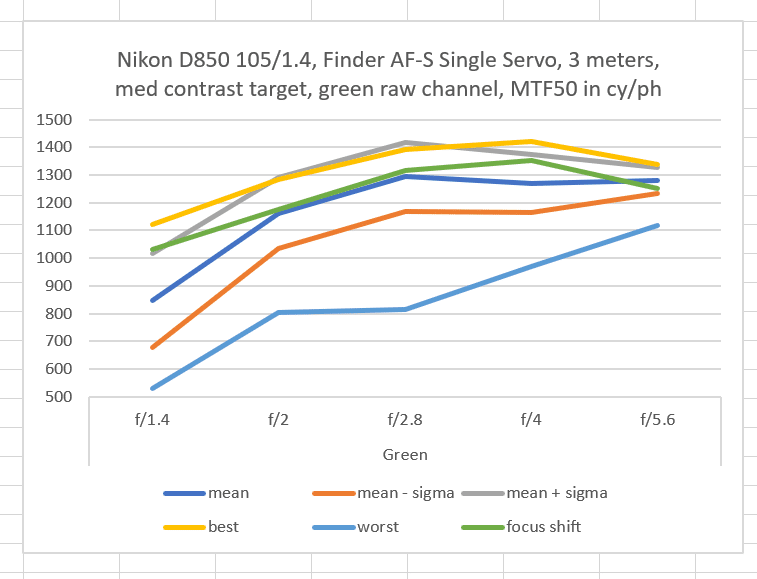
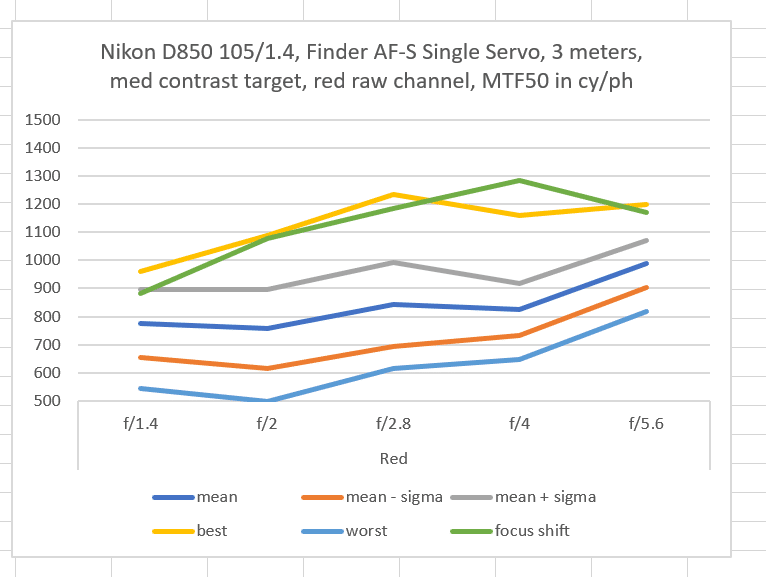
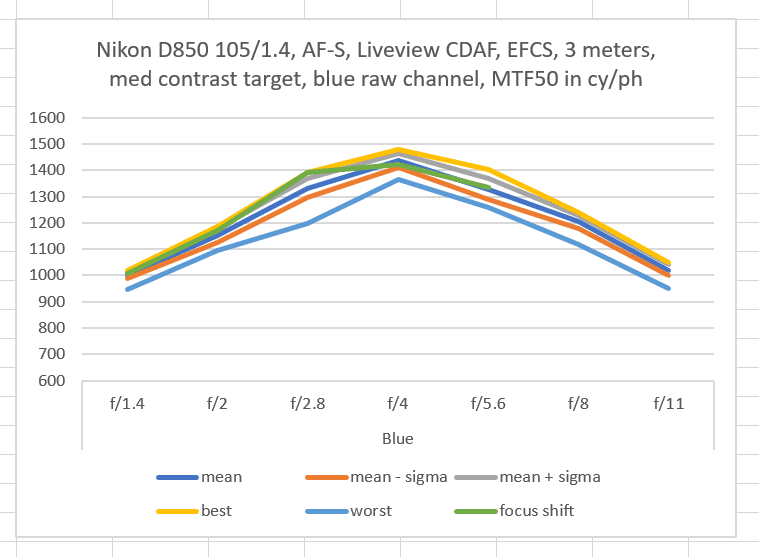
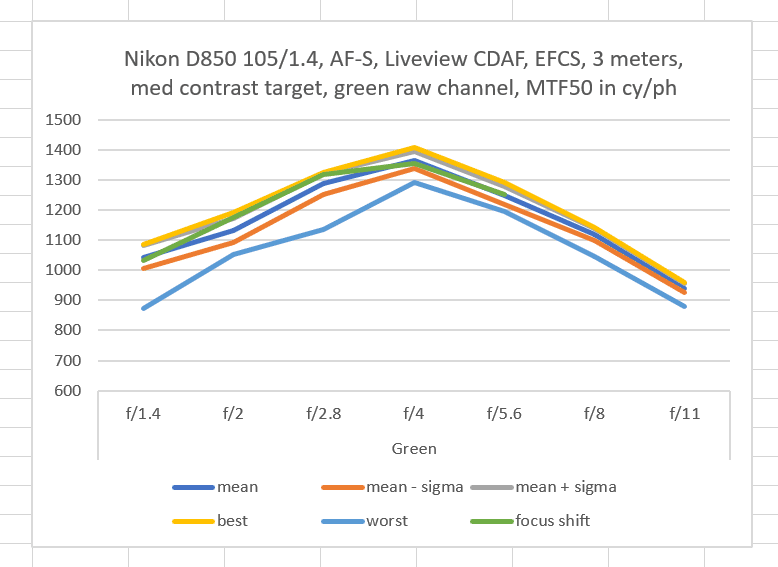
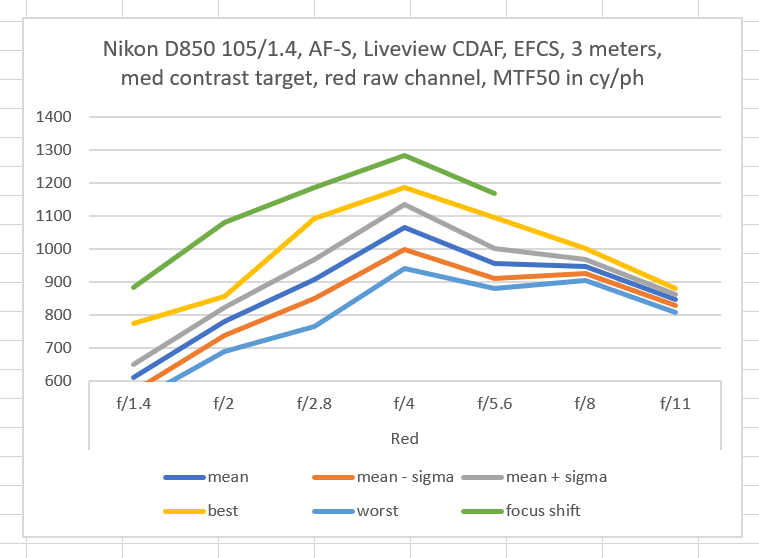
Hi Jim,
The last plot is quite interesting. I wonder if the CDAF operates on a grayscale image, or if it simply uses the green photosites. Either way, it is clear that the red channel has a very low weight, if it is used at all.
I suppose one could design a test chart where you deliberately manipulate the sharpness of some red-on-white targets, mixed in with some gray-on-white targets, to further examine the overall sensitivity to the red channel. Just out of pure curiosity, of course.
-F